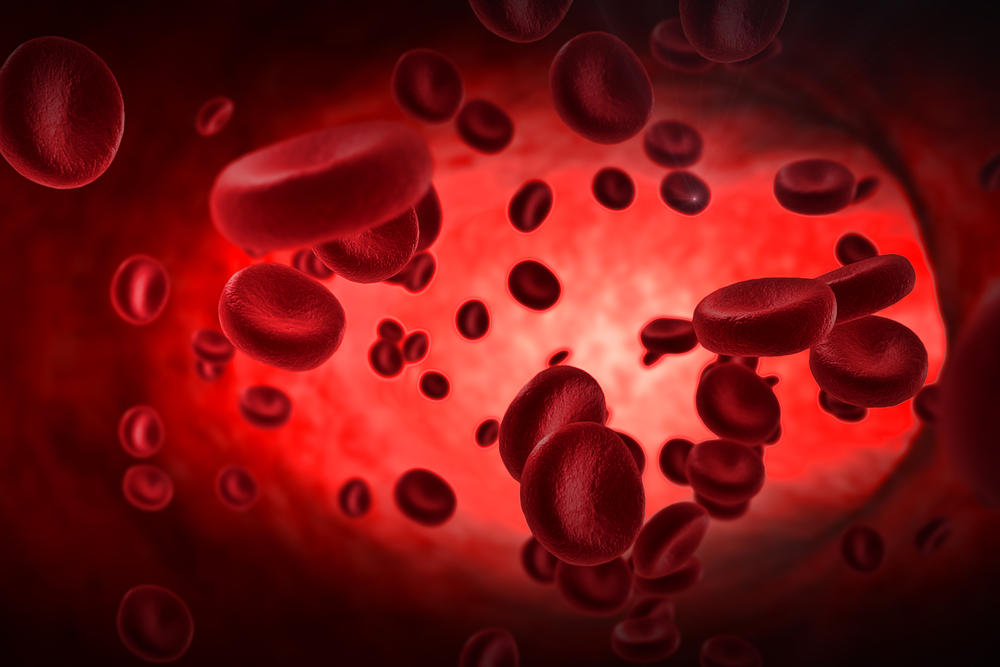Case Reports Call for Need to Customize Management of AHA for Elderly

Clinical symptoms of acquired hemophilia A in elderly patients can vary widely, a series of six case reports reveals.
Also, these patients should be managed individually in order to achieve the best care and outcome, researchers suggest.
The cases were described in the study “Management of Acquired Hemophilia A in Elderly Patients,” which was published in the journal Case Reports in Hematology.
Acquired hemophilia A (AHA) is a potentially life-threatening bleeding disorder caused by the abnormal production of antibodies against clotting factor VIII (FVIII). The incidence of AHA increases with age, with about 80% of the affected patients being 65 or older.
Treating these patients can represent a challenge because AHA tends to occur in elderly patients, many of whom also have other diseases or conditions.
Researchers reported the cases of six Japanese elderly patients who were diagnosed with AHA.
The first case was about a woman, 91, who was admitted to the hospital due to a four-day history of subcutaneous and intramuscular hemorrhages in the arms and legs.
Laboratory analysis revealed she had severe anemia with impaired blood clotting. She received red blood cell and plasma transfusions, but five days after she was still having hemorrhages. Ten days after admission to the hospital, FVIII activity was almost absent and she had very high levels of anti-FVIII antibodies in addition to positive lupus anticoagulant (LAC), which led to an AHA diagnosis.
She was treated with 36 doses of NovoSeven (recombinant FVIIa, marketed by Novo Nordisk) and prednisolone, followed by five weeks of cyclophosphamide plus prednisolone combo therapy. Within seven weeks, she achieved complete resolution of her clinical symptoms.
The second patient was a man, 93, showing signs of blood in the urine and experiencing hemorrhages in the nasal cavity and in the right shoulder for two weeks after admission to the hospital for pneumonia. Similar to the previous case he also was anemic and had impaired blood clotting. Laboratory tests confirmed he had reduced activity of FVIII and 17.6-fold higher levels of anti-FVIII inhibitors.
He received six doses of NovoSeven over two days in combination with prednisolone. In five days his symptoms improved and AHA was under control within the next two weeks.
Another case reported was of a 92-year-old woman who, three weeks after undergoing a surgery, was suffering with generalized subcutaneous hemorrhages for a few days. After admission she received prednisolone and red blood cells and plasma transfusions to reverse her anemia and reduced blood clotting. She had FVIII activity level of 3% and 20-fold higher levels of anti-FVIII antibodies.
Based on these findings she received an AHA diagnosis and was treated with two doses of NovoSeven followed by prednisolone as maintenance therapy. Although she remained stable for the next two years, she relapsed and developed new subcutaneous hemorrhages. Additional analysis revealed that her FVIII activity and inhibitory antibodies levels were again altered. At this point she was treated with prednisone.
The fourth reported case was a 90-year-old man who developed an intramuscular hemorrhage in the left glutei (buttocks muscle).
He had been diagnosed previously with AHA and so, given his blood lab results, the clinical team suspected a relapse. He was treated immediately with red blood cell infusions and three doses of Feiba (APCC, marketed by Shire) and prednisolone. Further analysis revealed he had almost undetectable FVIII activity levels and very high amounts of anti-FVIII inhibitor.
The initial treatment was sufficient to induce a state of no bleedings, but his levels of FVIII remained below the normal values for several months. This led to additional hospitalizations due to intermittent cutaneous hemorrhages. These episodes were treated with a minimal dose of NovoSeven just to control the bleeding.
“Due to the persistence of high anti-FVIII inhibitor levels, the patient was transferred to a tertiary center for further management,” researchers reported.
In another case, of an 80-year-old man, the disease manifested with soft tissue hemorrhages in the left forearm and right lower extremity for three weeks. After admission he was found to be anemic with impaired blood clotting, with very low levels of FVIII and very high amounts of inhibitors. He also was found to have chronic neutrophilic leukemia (CNL).
After receiving the AHA diagnosis he was treated with 16 doses of Feiba and four doses of NovoSeven. With this approach his blood clotting response was restored to within normal ranges. Elimination of the autoantibodies was treated with prednisolone and two doses of Rituxan (rituximab). However, it was necessary to give him two additional doses of Rituxan to effectively stop anti-FVIII antibodies production. Overall, his AHA condition was resolved within 26 weeks.
To treat the concomitant CNL diagnosis he was treated with the anti-cancer therapy Hydrea (hydroxycarbamide).
The sixth case described was about a woman, 62, who developed a hemorrhagic shock a few hours after a tooth extraction. At the emergency room she was found to be anemic, to have reduced levels of fribinogen, and impaired blood clotting efficiency.
She received red blood cells and plasma transfusion to stabilize her clinical condition. Later, she received the diagnosis of AHA with 23.8-fold higher levels of anti-FVIII inhibitors. Because she also had a history of liver cirrhosis the clinical team tried to avoid the use of targeted blood-clotting therapies, and chose to use plasma exchanges to achieve proper blood rebalance.
Elimination of the FVIII inhibitors was achieved with prednisolone and cyclosporine A treatment, and the AHA episode was resolved within 10 weeks. “Unfortunately, the patient died of liver failure a year after the onset of AHA,” researchers wrote.
Supported by the variable course of disease described in these unrelated cases, the team believes “emergency department physicians must consider AHA when formulating a differential diagnosis” in cases of elderly patients presenting “various bleeding episodes.”
“Since the severity of AHA is variable, individualized therapy is needed to provide the patients with the best care,” they added.






